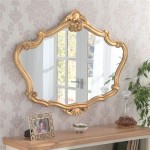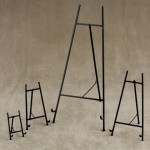Safety Wall Mirror: Ensuring Security and Visibility in Diverse Environments
Safety wall mirrors serve a crucial role in enhancing security, improving visibility, and preventing accidents across a multitude of environments. These specialized mirrors, designed with durability and distortion-free reflection in mind, find applications in industrial settings, retail spaces, healthcare facilities, traffic management, and even residential properties. Their primary function is to eliminate blind spots and provide a wider field of view, thereby fostering safer conditions and preventing potential hazards.
Unlike standard mirrors designed for aesthetic purposes, safety wall mirrors prioritize functionality and resilience. They are constructed using materials that can withstand impact and harsh conditions, ensuring long-term performance and reducing the risk of breakage. The design incorporates features that minimize distortion, providing a clear and accurate reflection of the surroundings. This clarity is paramount for effective surveillance and accident prevention.
The effectiveness of a safety wall mirror hinges on several factors, including its size, shape, material, and placement. Selecting the appropriate mirror for a specific application requires careful consideration of the environment, the intended use, and the desired field of view. Proper installation is equally critical, ensuring the mirror is securely mounted and positioned to maximize its effectiveness.
Key Applications of Safety Wall Mirrors
Safety wall mirrors are deployed across a diverse range of sectors, each leveraging their unique properties to address specific safety and security challenges. The following outlines some of the most prominent applications:
Industrial Settings: Factories, warehouses, and manufacturing plants often present hazardous environments with moving machinery, forklift traffic, and limited visibility. Safety wall mirrors are strategically placed at intersections, loading docks, and around blind corners to improve situational awareness and prevent collisions. These mirrors assist operators in navigating tight spaces and monitoring critical areas, minimizing the risk of accidents involving personnel and equipment. Furthermore, they can be used to observe production lines from a distance, allowing supervisors to monitor operations without physically being present in potentially dangerous zones.
Retail Security: Retail environments are susceptible to theft and shoplifting. Convex safety mirrors are widely used in stores to provide a wider field of view, enabling staff to monitor aisles and blind spots effectively. Placed strategically near high-value merchandise or in areas prone to pilferage, these mirrors act as a visual deterrent and allow security personnel to identify suspicious activity. Their presence can discourage potential offenders and enhance overall security measures. Moreover, they can assist staff in monitoring customer activity, ensuring a safe and comfortable shopping environment.
Traffic Management: In areas with limited visibility, such as blind intersections, parking garages, and tight roadways, traffic safety mirrors play a crucial role in preventing collisions. These mirrors, typically convex in shape, are installed to provide drivers with an expanded view of approaching traffic, pedestrians, and cyclists. They are particularly useful in locations where structural obstructions or vegetation impede sightlines. By enhancing visibility, these mirrors help drivers anticipate potential hazards and make informed decisions, reducing the likelihood of accidents and improving traffic flow. The placement must adhere to local regulations and guidelines to ensure optimal effectiveness and prevent any obstruction of existing traffic control devices.
Healthcare Facilities: Hospitals, clinics, and nursing homes utilize safety mirrors to improve patient safety, particularly in areas where close monitoring is required. They can be placed in hallways, patient rooms, and nurses' stations to provide a wider view of the surroundings. This allows staff to monitor patients without constantly being physically present, improving response times and enhancing overall care. Furthermore, they can be used to observe patients with mobility issues or those at risk of falling, allowing for timely intervention and prevention of injuries. Safety mirrors also contribute to a safer environment for staff by providing a clear view of potentially volatile situations.
Residential Properties: While less common than in commercial settings, safety mirrors can be beneficial in residential properties to improve security and visibility. They can be installed in driveways, garages, and hallways to eliminate blind spots and deter intruders. A strategically placed mirror can provide residents with a clearer view of their surroundings, enhancing their sense of security and allowing them to respond quickly to any potential threats. Furthermore, they can be used to monitor children playing in the yard or to observe visitors approaching the property.
Materials and Construction of Safety Wall Mirrors
The materials used in the construction of safety wall mirrors are carefully selected to ensure durability, clarity, and resistance to breakage. The choice of material depends on the intended application and the specific environmental conditions.
Acrylic: Acrylic mirrors are a popular choice due to their lightweight nature, high impact resistance, and excellent clarity. They are significantly less likely to shatter than glass mirrors, making them a safer option in environments where breakage is a concern. Acrylic mirrors are also relatively easy to clean and maintain, making them suitable for a wide range of applications. However, they are more susceptible to scratching than glass mirrors and may require special cleaning solutions to prevent damage.
Polycarbonate: Polycarbonate mirrors offer even greater impact resistance than acrylic mirrors, making them ideal for high-traffic areas and environments where vandalism is a concern. They are virtually unbreakable and can withstand significant force without shattering. Polycarbonate mirrors also provide excellent clarity and distortion-free reflection. However, they are generally more expensive than acrylic mirrors and may require specialized cleaning solutions to maintain their appearance.
Stainless Steel: Stainless steel mirrors are known for their exceptional durability, corrosion resistance, and tamper-proof qualities. They are often used in harsh environments, such as correctional facilities, food processing plants, and outdoor installations. Stainless steel mirrors are virtually indestructible and can withstand extreme temperatures and exposure to chemicals. However, they may not provide the same level of clarity as acrylic or polycarbonate mirrors and can be more expensive.
Glass with Safety Film: Traditional glass mirrors can be made safer by applying a safety film to the back surface. This film prevents the glass from shattering into sharp pieces upon impact, reducing the risk of injury. Glass mirrors with safety film offer excellent clarity and reflection but are still more vulnerable to breakage than acrylic or polycarbonate mirrors. They are often used in applications where a high level of aesthetic appeal is desired but where some level of safety is required.
The frames of safety wall mirrors are typically constructed from durable materials such as steel, aluminum, or high-impact plastic. The frame provides structural support and protects the edges of the mirror from damage. The mounting hardware is designed to securely attach the mirror to the wall, ensuring it remains in place even under stress. The overall construction is engineered to withstand the rigors of daily use and provide long-lasting performance.
Factors to Consider When Selecting and Installing Safety Wall Mirrors
Choosing and installing the right safety wall mirror is critical to ensuring its effectiveness and maximizing its benefits. Several factors must be considered to make informed decisions.
Size and Shape: The size and shape of the mirror should be determined by the specific application and the area to be covered. Larger mirrors provide a wider field of view but may require more space. Convex mirrors are ideal for expanding the field of view in areas with limited visibility, while flat mirrors provide a more accurate reflection of distance. The appropriate size and shape will depend on the specific needs of the environment.
Placement and Angle: The placement of the mirror is crucial for maximizing its effectiveness. It should be positioned to eliminate blind spots and provide the desired field of view. The angle of the mirror can be adjusted to optimize visibility and ensure it is directed towards the areas of concern. Proper placement and angle are essential for achieving the intended safety and security benefits.
Environmental Conditions: The environmental conditions should be considered when selecting the appropriate type of mirror. In harsh environments, such as those with extreme temperatures, humidity, or exposure to chemicals, durable materials like stainless steel or polycarbonate are recommended. In areas prone to vandalism, tamper-proof mirrors may be necessary. The specific environmental conditions will influence the choice of material and construction.
Local Regulations and Guidelines: In certain applications, such as traffic management, local regulations and guidelines may dictate the type, size, and placement of safety mirrors. It is important to consult with local authorities to ensure compliance with all applicable standards. Failure to comply with these regulations can result in fines or other penalties.
Maintenance and Cleaning: Regular maintenance and cleaning are essential for maintaining the clarity and effectiveness of safety wall mirrors. The appropriate cleaning solutions should be used to avoid damaging the mirror surface. Damaged or broken mirrors should be replaced promptly to prevent accidents or injuries. Proper maintenance and cleaning will extend the lifespan of the mirror and ensure its continued performance.
By carefully considering these factors, users can select and install safety wall mirrors that meet their specific needs and provide effective safety and security solutions. The implementation of these mirrors contributes significantly to creating safer environments across a multitude of sectors.

Safety Wall Mirrors At Lakeshore Learning

Long Rectangle Shatterproof Acrylic Safety Wall Mirror With Rounded Corners

Outdoor Stacking Rainbow Nursery Safety Wall Mirror Educational Equipment Supplies

Safety Wall Mirrors At Lakeshore Learning Infants And Bursabariatric Com

Hd Wall Mirror Kit For Gym And Studio 48 X 84 Inches With Safety Backing

Fab Glass And Mirror Hd Tempered Wall Kit For Gym Studio 48 X 72 Inches With Safety Backing Gm48x72 The Home Depot

Fab Glass And Mirror Annealed Wall Kit For Gym Studio 48 X 72 Inches With Safety Backing Gma48x72 The Home Depot

Haba Pro Starry Forest Safety Wall Mirror 1158930

Rectangle Shatterproof Acrylic Safety Wall Mirror With Rounded Corners

Fab Glass And Mirror Annealed Wall Kit For Gym Studio 48 X 72 Inches With Safety Backing Gma48x72 The Home Depot








